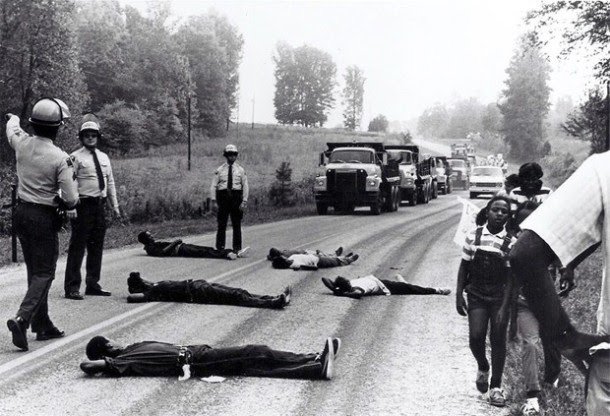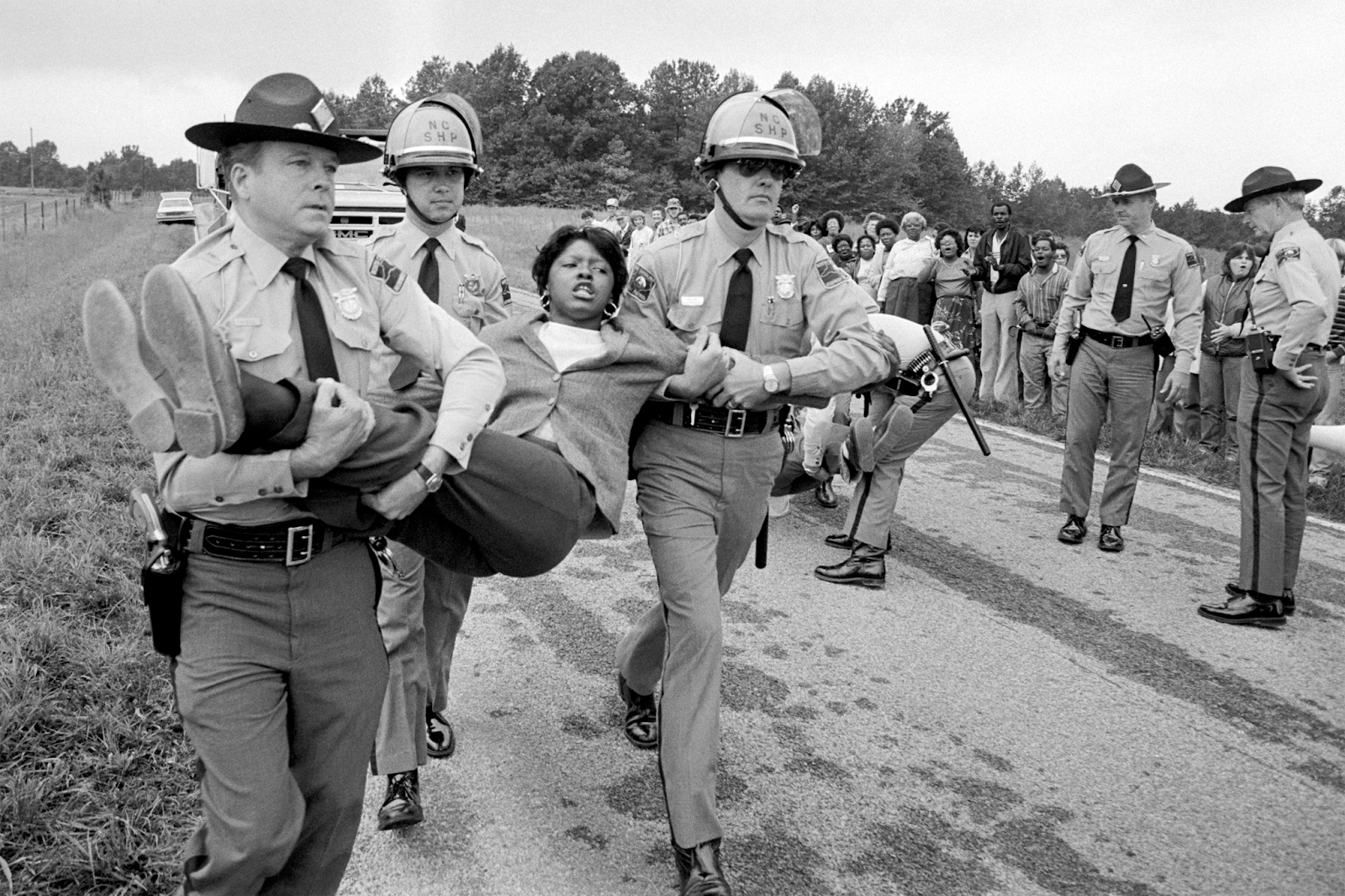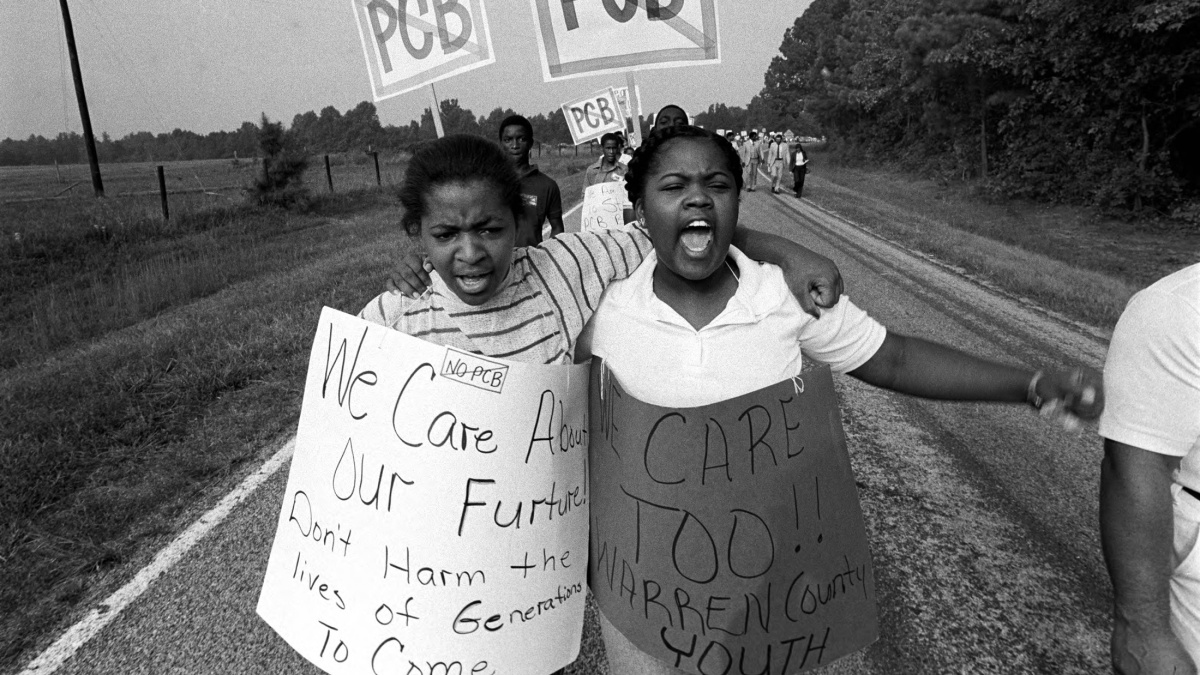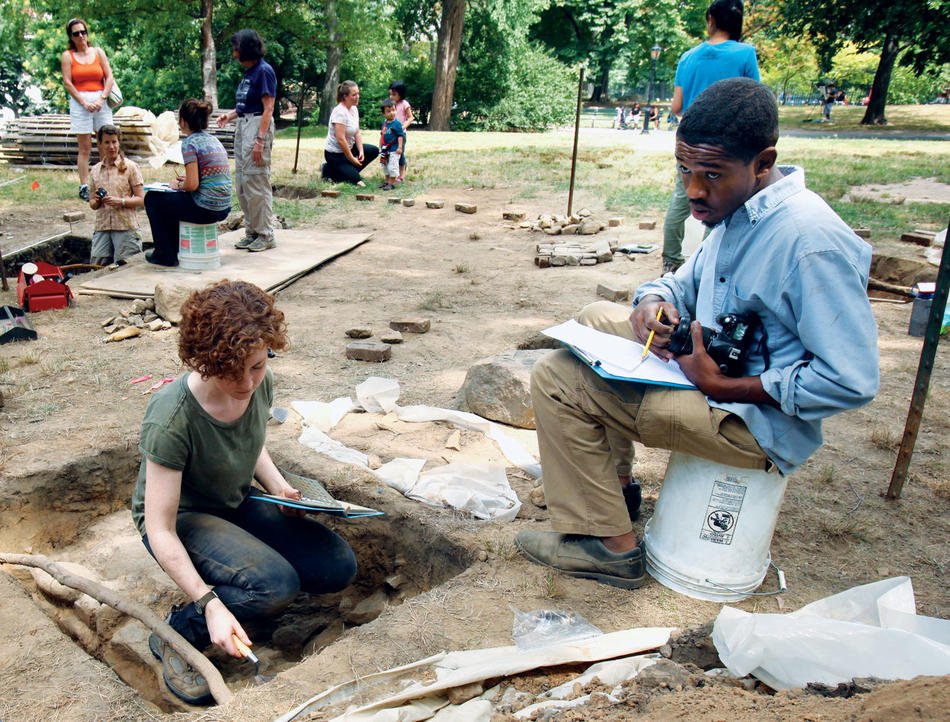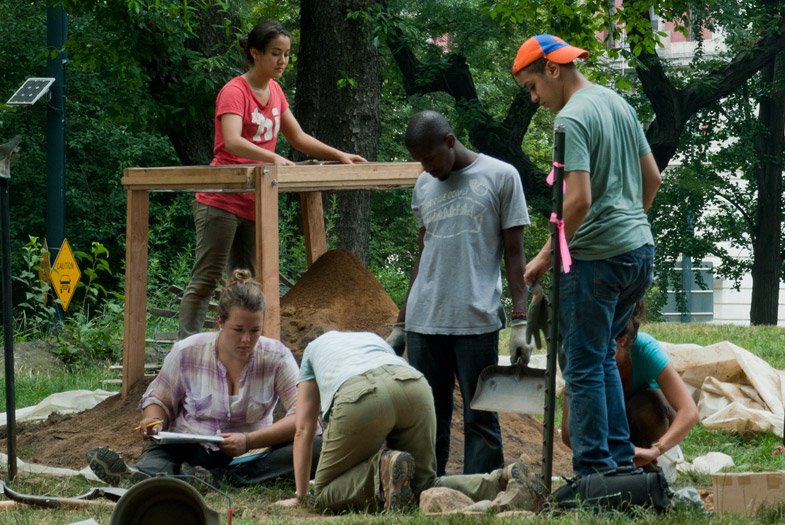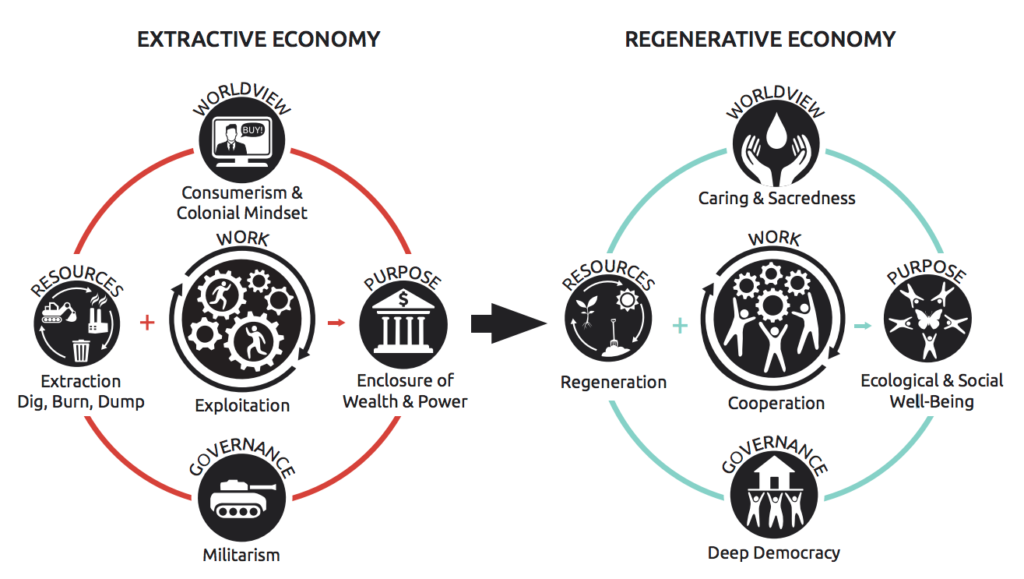Exploring the History of Environmental Justice to Support Anti-Racism
This Black History Month, Learn from Scars of the Past
The Environmental Justice Movement (or EJ, as it’s referred to) addresses a statistical fact: people who live, work and play in America’s most polluted environments are commonly people of color and the poor.
Environmental justice advocates have shown that this is not by accident: these communities are routinely targeted to host facilities – like landfills, dirty industrial plants, or truck depots – that have vast negative environmental impacts.
Communities have battled against such “environmental racism” for decades.
The Birth of the Environmental Justice Movement
The environmental justice movement was born in the poor, rural and majority Black community of Warren County, North Carolina. In 1982, the state government created plans for a new hazardous waste landfill in the small community of Afton.
Many Afton residents and local advocates were concerned about Polychlorinated Biphenyls, or PCBs, leaching into drinking water supplies. The state dismissed their concerns, but when trucks tried to enter the site, residents and advocates lay down on the roads leading into the landfill to stop them. This action was followed by six weeks of marches and non violent street protests, which eventually led to the arrest of more than 500 people – the first arrests in U.S. history over the siting of a landfill.
Unfortunately, the people of Warren County lost this battle. The toxic waste was eventually deposited in the landfill. However, even though other communities of color organized against environmental threats in the past, Warren County was considered by many to be the first major milestone in the national movement for environmental justice.
Environmental Justice in Politics
Nearly nine years later, the environmental justice movement officially came to the forefront of American politics. In October 1991, the First National People of Color Environmental Leadership Summit met for three days in Washington D.C.
The summit brought together hundreds of environmental justice leaders from across North America, and they produced the “Principles of Environmental Justice” and the “Principles of Working Together”, which would become two foundational documents of the environmental justice movement.
The movement took another huge leap in 1994, when President Bill Clinton made environmental justice a federal government policy.
With the signing of Executive Order 12898 on February 11, federal agencies were mandated to identify and address disproportionately high adverse health or environmental effects of their policies or programs on low-income people and people of color. The Executive Order also directed federal agencies to look for ways to prevent discrimination by race, color, or national origin in any federally funded programs dealing with health or the environment.
The Scars of History
Over the past two decades, environmental justice organizations have formed across the country to fight environmental racism. Many of these groups have become deeply invested in advocating for environmental protection and social change in their communities.
A major stumbling block in the progress of the EJ movement is the fact that the broader environmentalist movement has traditionally only incorporated white voices and concepts. This has left historical scars, one of which runs right through one of the most influential cities on the planet: New York City.
Seneca Village: A Symbol of Black Prosperity
Central Park is one of the most recognizable parks in the world. It stretches nearly 51 street blocks, and covers approximately 843 acres of land in the middle of Manhattan.
Today, you’ll see loads of tourists and locals enjoying the beautiful scenery and everything Central Park has to offer. Over recent history, Central Park has been viewed as a win for the wider environmental movement, gaining various nicknames such as the “Lungs of the City” and a “fresh air safe haven in the city.”
But the creation of Central Park has a dark history.
Before Central Park was built in 1857, the area housed Seneca Village, Manhattan’s first significant settlement of Black property owners and the epicenter of Black political power in Manhattan during the mid-19th century. Stretching from West 82nd Street to West 89th Street, Seneca Village allowed residents to live away from the more built-up and racially discriminatory sections of downtown Manhattan.
Residents of Seneca Village were considered more prosperous and stable than their counterparts – approximately half of them owned their own homes by 1855. With property ownership came the right to vote, a right New York State only granted to African American men who owned at least $250 in property and held residency for at least three years. Of the 100 Black New Yorkers eligible to vote in 1845, 10 lived in Seneca Village.
The Tragedy of Seneca Village
During the 1850s, the City was grappling with extremely unhealthy urban conditions and wanted to create a space for open recreation.
In 1853, the New York State Legislature enacted a law that originally set aside 775 acres of land in Manhattan to create the country’s first major landscaped public park. The law was greeted as a great opportunity to build upon New York’s mission to become a healthier community – but it also openly displaced one of the most important African American communities of that time.
Central Park was eventually developed, and the residents of Seneca Village had their land taken from them through the process of eminent domain. Over the decades that followed, the history of Seneca Village diminished and was all but erased – until 2011, when an archeological excavation of the area uncovered significant remains and artifacts.
Working Towards a ‘Just Transition’
Environmental justice groups consistently fight against the creation of further environmental scars that could give communities a similar fate to that of Seneca Village. Across the country, prominent issues continue to face their communities – from lack of access to safe drinking water, to the impacts of extraction of natural resources, to the disproportionate impacts of climate change.
Today, corporations have built their business models and supply chains around a culture that embraces a throw-away and disposable paradigm. This paradigm encompasses traditional white environmentalist concepts that have disproportionately affected indigenous communities, communities of color, and lower-income communities.
Upstream recognizes the negative impacts of this societal system and believes reuse can be used as a mechanism to pursue a ‘Just Transition’ – which refers to building upon an economic and political power shift from an extractive economy to a regenerative economy, and approaches production and consumption cycles holistically and waste-free.
The Benefits of Reuse for EJ Communities
In addition to being a catalyst for a ‘Just Transition’, reuse can produce strong benefits for impacted communities:
Quality of Life: Reuse helps reduce overall pollution, toxic chemical exposure, and litter and can greatly improve the overall living conditions of a community.
Economic Prosperity: Reuse creates economic opportunities across the supply chain where local jobs are the priority and can be created and filled by those in the local community.
Climate Change Mitigation: Reuse can be used as a mechanism for greenhouse gas mitigation, as reusables have smaller CO2 impacts than their single-use alternatives, which would benefit communities impacted the most by the effects of climate change.
Building an Indisposable World
Reuse is a part of the solution to help move our society away from its current throw-away paradigm. It can also help create indisposable communities that have equal access to economic, social, and environmental opportunities.
Upstream is focused on embracing environmental justice principles and strives to continue prioritizing this work by helping the wider reuse movement understand the strong connection that exists between reuse and environmental justice.
Thank you for joining us on this journey to a better way than throw-away. We hope you continue learning about and discovering Black leadership this Black History Month and beyond.



